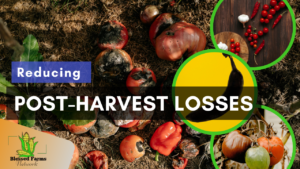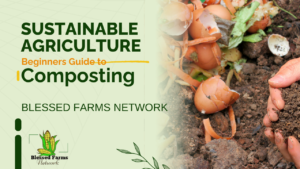Introduction
There is great benefits in having companion plants. As a small-scale farmer, your interest is producing the highest quality of product at the lowest price possible. Any additional cost that can be avoided is well appreciated.
This is where harnessing the power of flowers and plants come in.
Numerous civilizations have used flowers and plants to attract insects into their shambas, thus increasing the rate of pollination and plants that have pungent smell as pest-repellant. In the process of creation, God was kind enough to His people to provide us with everything we need for a healthy life. These innovative ideas have led to a farming system that is not only sustainable, but also very effective in reducing the cost of production, especially for a small-scale farmer.
Why Opt for Companion Plants in Farming?
With the advancing technologies, numerous pesticides have been developed as a solution to the pests that affect our shambas. Extensive studies into these pesticides will actually show that they are developed based on specific chemicals that are readily available in some plants. An example is the neem oil which is used as a pesticide to disrupt the growth and reproduction of insects, comes from neem tree, Pyrethrin, comes from chrysanthemum flowers and is considered an effective pesticide. Scientists have discovered that plants act as an effective template for development of synthetic pesticides.
The question is, why use your money to buy pesticides when you can plant a flower that will give the same result? Further, the use of pesticides has health risks, environmental degradation, and the potential for pesticide resistance.
Imagine a garden teeming with life, where flowers not only beautify the landscape but also draw in helpful insects that pollinate plants and manage pests! By understanding the symbiotic relationships between plants and insects, farmers can cultivate a healthier environment for their crops.
Flowers as Companion Plants to Attract Beneficial Insects
The role of insects in any ecosystem is undeniable. Especially in the farming world, insects can be viewed as the unsung heroes that help to pollinate plants while still keeping harmful pests away. As such it is necessary as part of your companion plants farming practice, to include flowers that will attract the right insects.
Sunflowers: Nature’s Beacons
Sunflowers stand tall and proud, not just for their beauty but for their ability to attract a variety of beneficial insects. Bees and butterflies are drawn to their vibrant yellow petals, while lacewings—known for their voracious appetite for aphids—also find a home in sunflower gardens.
- How to Use: Plant sunflowers around the borders of your vegetable garden or intersperse them among crops. They provide shelter and shade for smaller plants, helping to create a micro-ecosystem that supports a range of beneficial insects.
Marigolds: The Pest Control Powerhouse
With their bright colors, marigolds are a gardener’s best friend. These flowers attract hoverflies and ladybugs, both of which feast on aphids and other pests that threaten crops. Additionally, marigolds have been shown to repel nematodes, a notorious pest for many vegetables. Studies have proven their effectiveness in repelling whiteflies, and prevent the hatching of nematode eggs. The studies show that the roots of marigold release a toxic chemical that interrupts the lifecycle of nematodes.
- How to Use: Plant marigolds in and around vegetable beds or intercropped with tomatoes and peppers. Their presence not only adds color to your garden but also promotes a healthier crop yield. It is necessary that they are planted before the infestation occurs, and thus should be planted before the vegetable crop.
Lavender: Aromatic Allies
Lavender isn’t just a delightful addition to your garden for its scent; it also attracts bees and butterflies, which are essential for pollination. Moreover, it draws in predatory wasps that help control caterpillar populations and other garden pests.
- How to Use: Position lavender along the edges of your vegetable gardens or as companion plants for crops like cabbage. This way, you’ll have a fragrant, attractive barrier that encourages beneficial insect activity.
Dill
Dill flowers are not only beautiful but also vital for attracting predatory insects. Ladybugs and parasitic wasps love dill, and they can significantly reduce the number of aphids, mites, and caterpillars in your garden.
- How to Use: Plant dill near crops such as cucumbers and cabbage, or even alongside tomatoes and onions. The height of dill plants can provide excellent cover for other smaller plants.
Companion Plants as Natural Pest-Repelling
Other than attracting insects, companion plants can also act as natural barriers against harmful insects. Plants like herbs have natural pest-repelling properties that can act as effective herbicides for small scale farmers.
Here are some of the most effective plants for small-scale farmers to include in their gardens:
Basil
To many people, Basil is known as a popular culinary herb. But far from that it also acts as a natural pest repellent. Its strong aroma can deter mosquitoes, whiteflies, and aphids, making it a perfect companion for many crops.
- How to Use: Plant basil alongside tomatoes, peppers, and asparagus. Not only does it improve the flavor of these vegetables, but it also keeps harmful pests at bay.
Garlic
Garlic is also known for its culinary flavor due to its strong aroma. It is this same strong aroma that makes it an effective pest-repellant.
Its strong aroma can deter mosquitoes, whiteflies, and aphids, making it a perfect companion for many crops.
- How to Use: Plant basil alongside tomatoes, peppers, and asparagus. Not only does it improve the flavor of these vegetables, but it also keeps harmful pests at bay.
Mint
Mint is another herb that offers both culinary benefits and pest-repelling qualities. Its aroma helps keep ants, aphids, and cabbage moths at bay.
- How to Use: Plant mint around garden borders or in pots to prevent it from spreading too aggressively. It pairs well with tomatoes and cabbage, providing both flavor and pest protection.
Rosemary
Rosemary is not only a flavorful addition to many dishes, but it also serves as an excellent pest deterrent. It repels cabbage moths, carrot flies, and beetles, making it a valuable plant for any garden.
- How to Use: Grow rosemary near beans, cabbage, and carrots. Its strong scent will keep pests away while attracting beneficial insects, ensuring a thriving ecosystem.
Planning your garden Layout
As seen from the discussion above, it is necessary to have a well-designed garden that ensures continued production with minimal pests and high rate of pollination. Well designed gardens not only increase the beauty of garden, but increases output. The key to a successful layout is understanding the relationship between crops and the beneficial plants that can help the main plants. These are some of the suggestions:
Decide what to grow
The first step is making a decision on which main crops you are planting. This knowledge will be instrumental in planning their accompanying herbs and flowers, and the appropriate place, based on the specific requirement of each plant, to plant. It is recommended to start with few number of main crops, mostly three, and grow each season from there.
Choose border and companion plants
Surround your main crop with a border of flowers and herbs. Choose an appropriate system for companion plants, to increase rate of growth and protection.
E.g you can plant marigold and sunflower as companion plants to tomatoes. Marigold will repel nematodes while sunflower will act as shade and attract pollinators. Basil, can also be added to this farm to repel mosquitos and white flies.
Another example is growing dill with cabbage, where dill will repel cabbage moths which lay eggs on cabbages, and attract predatory wasps which eat other pests. If planting carrots, consider adding chives as it deters aphids and carrot flies, while adding Sulphur to the soil preventing fungal infection.
Create Zones
To ensure efficiently, it is necessary that the garden is divided into zones based on the plant height, and their requirements. Tall flowers like sunflower should be placed in areas where they won’t block light from smaller plants. Herbs like basil and rosemary cannot tolerate lots of sunlight and thus should be placed a way from direct sunlight
Consider plant grouping
Group flowers and herbs based on their pest-repelling and pollinator-attracting qualities. For example, lavender and rosemary can be grouped together around crops that need protection from pests like aphids and caterpillars, while dill and cosmos can be placed near crops that require more pollination support.
The success of your flower and herb garden starts with one simple thing: quality seeds and cuttings. Have you ever tried growing plants from weak seeds? It’s frustrating—poor germination, slow growth, and weak plants that barely survive. This is why choosing high-quality seeds and cuttings is crucial. They give you strong, resilient plants right from the start. You’ll get better germination rates, faster growth, and healthier plants that can handle local conditions with ease. Why risk planting weak seeds when you can set yourself up for success with stronger ones? Quality makes all the difference. With the right seeds and cuttings, your garden will flourish, naturally repel pests, and attract the pollinators you need to boost crop yields.
Conclusion
By incorporating a mix of insect-attracting flowers and natural pest-repelling plants, small-scale farmers in Kenya can create a more balanced and sustainable ecosystem. These plants encourage beneficial insects that help with pollination and pest control while naturally deterring harmful pests. This approach not only reduces reliance on chemical pesticides but also improves overall crop health and productivity.
As we embrace these natural solutions, it’s essential to recognize the profound impact they can have on our farming practices. Sustainable farming is not just a trend; it’s a necessity for our health, the environment, and the future of agriculture in Kenya. So let’s dig our hands into the soil, plant a mix of flowers and herbs, and watch as nature’s helpers transform our farms into thriving ecosystems!
In a world where every action counts, let’s make choices that lead to a sustainable future. Embrace the beauty and power of flowers and plants on your farm—your crops, and the environment, will thank you!





